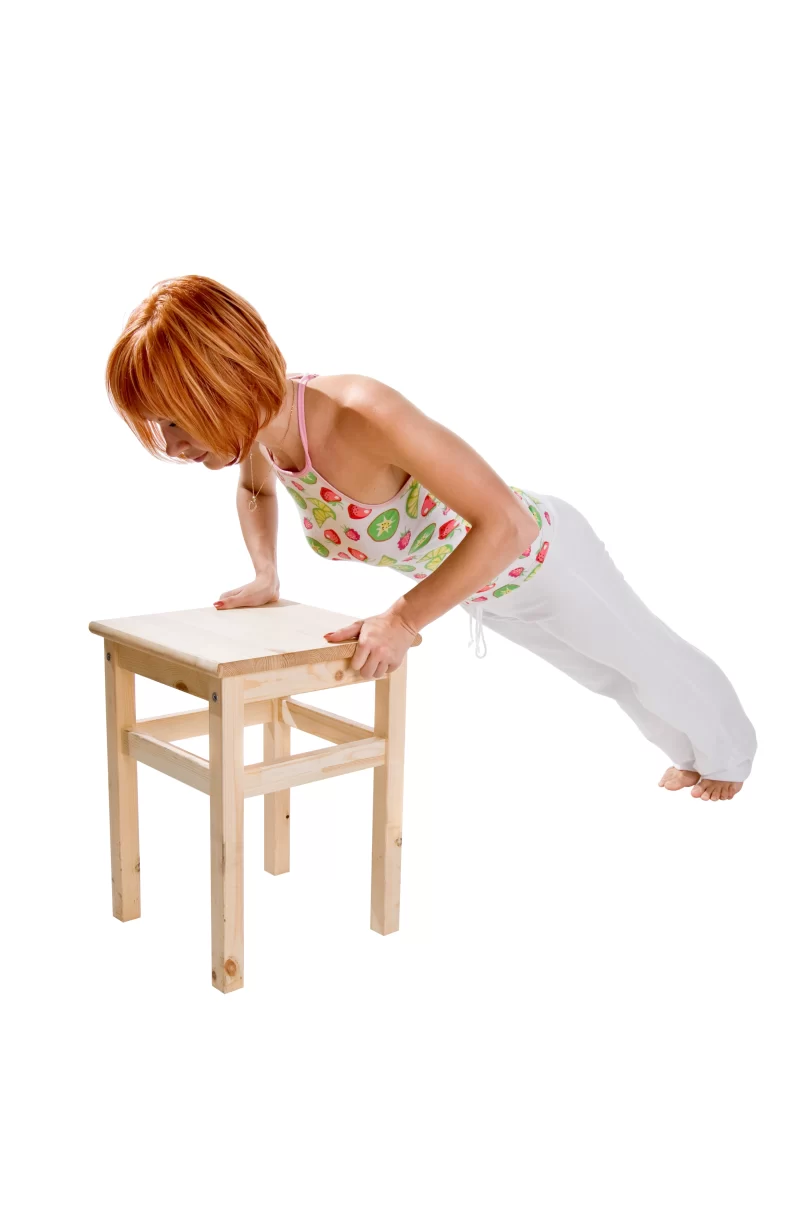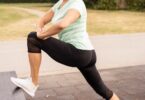Are you looking for a way to improve your flexibility, boost your overall wellness, and reduce stress without needing to stand or move around too much? If so, a Free 28-Day Chair Yoga Plan might be exactly what you need. Chair yoga is a fantastic way to gently stretch, strengthen, and relax your body while staying seated, making it ideal for seniors, beginners, and those with limited mobility. Over the course of 28 days, this plan will guide you through gentle movements, mindfulness practices, and wellness habits to leave you feeling revitalized and more at ease in your daily life.
Let’s get started on this journey toward better health and flexibility with chair yoga for wellness. You’ll find each week of this plan focused on different aspects like strength, flexibility, and balance, helping you steadily improve at your own pace. Ready? Let’s dive into the first part of this empowering wellness journey!
Introduction to Chair Yoga and the 28-Day Wellness Plan
What is Chair Yoga?
Chair yoga, unlike traditional yoga, is a type of yoga that allows participants to perform poses while seated or using a chair for support. This makes it an ideal exercise for seniors, beginners, and those with mobility challenges. You won’t need to get down on the floor, which removes a major obstacle for many people. But don’t be fooled—chair yoga poses can still provide a great workout!
Chair yoga focuses on flexibility exercises that improve mobility and strength, all while engaging in mindful movements. The beauty of this practice is that it can be done anywhere, whether you’re in an office, at home, or even traveling. Chair yoga helps improve balance, reduce pain, and promote relaxation, making it a versatile and accessible form of exercise.
Why Choose a 28-Day Plan?
Committing to a 28-day yoga plan is a great way to form new habits. Research suggests that it takes around 21 days to form a new habit, and by extending this practice to 28 days, you’ll solidify your chair yoga routine. This steady approach to wellness allows your body to gradually adapt, ensuring you build strength, flexibility, and mindfulness without overwhelming yourself.
By breaking down the plan into bite-sized daily or weekly routines, you’re more likely to stick with it. Each day’s session ranges from 10 to 30 minutes, allowing you to fit it into even the busiest schedule. So, whether you’re seeking to enhance flexibility, manage stress, or simply move more, this 28-day chair yoga plan is perfect.
Benefits of Chair Yoga for Wellness
Chair yoga offers numerous benefits for both the body and mind. By incorporating mindful movement with gentle stretches, you’ll not only improve physical health but also foster mental well-being. Here are some of the top reasons to start chair yoga today:
- Physical Benefits: Chair yoga enhances flexibility, strengthens muscles, and increases mobility. For seniors or those with arthritis, it’s especially beneficial for managing pain and maintaining range of motion.
- Mental Health Benefits: Chair yoga is a powerful stress-reliever. Engaging in focused breathing and meditation exercises can help lower anxiety and improve mood, making it a perfect practice for mental well-being.
- Adaptable for All Levels: This form of yoga is incredibly adaptive, meaning anyone can do it regardless of age, fitness level, or experience. Whether you’re a beginner or seasoned yogi, chair yoga meets you where you are.
Overview of the Free 28-Day Chair Yoga Plan
Now that we’ve covered what chair yoga is and why it’s so beneficial, let’s dive into how the Free 28-Day Chair Yoga Plan is structured. This plan is designed to gradually guide you through daily yoga routines that target specific wellness goals. Each week focuses on a different aspect of health, from building flexibility to strengthening muscles, improving balance, and encouraging mindfulness.
The best part? You can do this from the comfort of your chair, whether you’re at home, in the office, or even during breaks at work.
The Structure of the 28-Day Plan
This 28-day plan is organized into manageable daily routines that vary in length from 10 to 30 minutes. Each day will focus on specific poses and themes, ensuring that you experience the full range of benefits chair yoga for wellness offers. By sticking to the daily routine, you’ll notice steady improvements in your flexibility, strength, and mental clarity. Plus, it’s designed to be low-impact, making it ideal for those with mobility challenges or seniors who want to stay active.
If you’re a beginner, don’t worry! This plan has built-in variations to accommodate different experience levels. Whether you’re new to yoga for seniors or just looking for a more accessible routine, you can modify the poses to suit your abilities.
Daily Yoga Routine
Each day’s routine is carefully crafted to balance body and mind. The daily yoga session will include stretches, strength-building poses, and mindful breathing exercises. As you progress, you’ll find that some days focus more on stretching, while others aim to build strength and improve your balance. The key is consistency. Even on the days when you don’t feel like doing much, just showing up for 10 minutes can make a world of difference.
Here’s what you can expect in your daily yoga routine:
- Stretching Poses: These help to enhance flexibility and reduce stiffness. Whether you’re working on the seated forward bend or shoulder rolls, these stretches keep your muscles supple and joints limber.
- Strength-Building Poses: Chair yoga isn’t just about gentle stretches. You’ll also engage in poses like the seated warrior, which will help you build muscle without needing to stand.
- Mindfulness and Breathing: Every session incorporates mindful breathing to help you relax, reduce stress, and center your mind. This is essential for improving not just physical wellness, but mental clarity as well.
Weekly Themes
To keep things fresh and focused, the plan is broken into weekly themes. Each week emphasizes a different area of wellness, allowing you to hone in on specific health goals.
Week 1: Focus on Flexibility
The first week is all about flexibility. You’ll engage in stretches designed to open up your body and improve mobility. Perfect for those just getting started, this week’s sessions are gentle and help you ease into your new routine.
Week 2: Building Strength
During the second week, you’ll focus on strength-building poses. These low-impact exercises help tone your muscles, increase endurance, and improve posture. Even with the chair’s support, you’ll feel the burn in a good way!
Week 3: Balance and Coordination
Balance and coordination are key to overall wellness, especially as we age. In week three, you’ll work on poses that challenge your stability, helping you stay steady on your feet. Poses like the seated eagle will activate your core muscles and sharpen your balance skills.
Week 4: Mindfulness and Relaxation
Finally, the last week will center around mindfulness and relaxation. After three weeks of stretching and strengthening, it’s time to slow down and focus on mental well-being. This week will include gentle poses, deep breathing exercises, and meditation to help you cultivate inner peace and reduce stress.
Related Article: What is the 28-Day Chair Yoga Challenge? Benefits & Guide
Benefits of Chair Yoga for Specific Groups
Chair yoga is an incredibly versatile practice, making it a perfect fit for people of all ages and fitness levels. While it offers a range of general health benefits, chair yoga can be particularly transformative for certain groups of people. Whether you’re a senior looking to enhance mobility, someone with limited mobility recovering from injury, or an office worker battling stiffness from sitting all day, chair yoga for wellness has something for everyone.
Let’s take a closer look at how chair yoga benefits these specific groups and why incorporating it into your daily routine can make a significant difference.
Chair Yoga for Seniors
As we age, maintaining flexibility, balance, and mobility becomes more important than ever. For seniors, regular exercise can be challenging due to physical limitations, joint issues, or the risk of injury. That’s where chair yoga for seniors comes in—it’s a gentle, low-impact way to stay active and improve overall well-being.
Why Chair Yoga is Ideal for Seniors:
- Promotes Mobility: Chair yoga can help seniors stay flexible and mobile without putting undue strain on their joints. Simple stretches like seated forward bends or shoulder rolls can increase range of motion and help reduce stiffness, making daily tasks easier.
- Improves Balance: Falls are a major concern for older adults, but practicing balance poses like the seated tree pose can improve stability and coordination, reducing the risk of falls.
- Reduces Pain and Stiffness: For seniors with arthritis or joint pain, chair yoga offers a safe and effective way to move the body. Regularly practicing yoga can help alleviate symptoms of arthritis and increase circulation.
Real-Life Impact:
Many seniors who practice chair yoga find it to be life-changing. It allows them to stay active, prevent falls, and manage chronic conditions like arthritis, all while feeling supported by the chair. It’s a gentle yet effective way to improve their quality of life.
Chair Yoga for People with Limited Mobility
For those with limited mobility due to injury, disability, or chronic conditions, staying active can feel overwhelming. However, adaptive yoga through chair poses provides an accessible and beneficial way to move the body without risking injury. The beauty of chair yoga is that it meets you where you are, allowing you to modify poses to suit your abilities while still reaping the benefits of movement.
How Chair Yoga Helps People with Limited Mobility:
- Restores Range of Motion: Whether you’re recovering from surgery or managing a chronic condition, chair yoga can gently help you regain range of motion. Movements like seated spinal twists can stretch and activate stiff muscles.
- Boosts Circulation: Many people with limited mobility struggle with poor circulation. Chair yoga promotes better blood flow, reducing the risk of swelling or clot formation.
- Reduces Pain: Practicing yoga while seated can help manage pain, especially in areas like the back, shoulders, and neck, where tension often builds up. Gentle poses provide relief while keeping the body active in a safe way.
Chair Yoga for Office Workers
If you spend most of your day sitting at a desk, you’re not alone. Many people find themselves dealing with poor posture, stiff necks, back pain, and tight hips as a result of prolonged sitting. But the good news is that chair yoga for office workers can easily counteract these negative effects—no need for fancy equipment or a yoga mat.
Benefits of Chair Yoga for Desk Jobs:
- Counteracts Prolonged Sitting: Sitting for long periods can lead to tight hips, lower back pain, and poor posture. Chair yoga poses like seated cat-cow and seated warrior are perfect for stretching out tense muscles and realigning your posture.
- Increases Energy Levels: Chair yoga can offer a quick energy boost during the workday. Taking just 10 minutes to stretch and move can clear your mind, reduce stress, and keep you focused for the rest of the day.
- Prevents Burnout: Practicing mindfulness and breathing exercises during chair yoga can help combat work-related stress, preventing burnout and improving overall mental well-being.
The 28-Day Chair Yoga Poses and Variations
In this section, we’ll break down the key poses you’ll encounter during the 28-Day Chair Yoga Plan. These poses are designed to help you gradually improve your flexibility, strength, balance, and mental clarity. Whether you’re a beginner or a seasoned yogi, the chair yoga poses in this plan are adaptable to your abilities. Throughout the next four weeks, each pose will play a role in helping you build a sustainable yoga routine that leaves you feeling stronger and more centered.
Each week of the plan will focus on different goals: flexibility, strength, balance, and mindfulness. Here’s a breakdown of the poses and their variations that you’ll practice throughout this Free 28-Day Chair Yoga Plan for Wellness.
Week 1: Flexibility Focus
During the first week, you’ll focus on improving flexibility, especially in areas that tend to tighten with age or prolonged sitting. The goal is to stretch out the muscles, improve range of motion, and prepare your body for the more strength-based exercises to come.
Seated Forward Bend
This is a simple yet powerful pose for stretching the spine, hamstrings, and lower back.
- How to do it: Sit at the edge of your chair with feet hip-width apart. Inhale, lengthen your spine, and as you exhale, slowly hinge forward from your hips, reaching your hands toward the floor or your shins. Keep your spine long and avoid rounding your back.
- Variation: If you have tight hamstrings, place a yoga block or stack of books under your hands for support.
Seated Cat-Cow Stretch
The seated cat-cow stretch is great for improving flexibility in the spine, releasing tension in the back and neck.
- How to do it: Sit tall on your chair with your hands on your knees. Inhale, arch your back and look up (cow). Exhale, round your spine and tuck your chin to your chest (cat). Move with your breath.
- Variation: If you have limited mobility in your neck, only tilt your head slightly and focus on the movement in your upper back.
These flexibility exercises set the stage for more dynamic movements in the upcoming weeks. The goal of this week is to enhance flexibility without overexerting your muscles.
Week 2: Strength Focus
Building strength is key to maintaining mobility and overall health, especially as we age. During week two, you’ll focus on gentle but effective poses to strengthen your muscles using just your body weight and a chair for support.
Seated Warrior Pose
This pose helps build strength in the legs, arms, and core, making it a great full-body workout.
- How to do it: Sit sideways on your chair with one leg extended behind you, toes pointed out, and the other leg bent at a right angle. Extend your arms out to the sides, parallel to the ground. Hold for several breaths before switching sides.
- Variation: If extending the back leg feels challenging, keep both feet flat on the ground and focus on engaging your core and arms.
Seated Chair Pose
Seated chair pose strengthens the legs, glutes, and lower back. It’s an excellent pose for improving posture and endurance.
- How to do it: Sit with your feet firmly on the ground, hip-width apart. As you inhale, raise your arms overhead. Exhale, and lean forward slightly, engaging your core as if you’re about to stand up, but keep your bottom just hovering over the chair. Hold for a few breaths and then sit back down.
- Variation: If you find it difficult to hover, simply lean forward and engage your core without lifting off the chair.
This week will leave you feeling stronger without needing to stand up or put too much strain on your joints.
Week 3: Balance and Coordination
Balance is crucial for preventing falls and improving coordination. During week three, the focus will be on enhancing your balance and stability with poses that challenge your core muscles and improve your body awareness.
Seated Eagle Pose
This pose works on balance and coordination, as well as flexibility in the shoulders and hips.
- How to do it: Sit tall in your chair. Cross your right thigh over your left and wrap your right foot around your left leg if possible. Bring your arms in front of you and cross your right arm under your left, bringing your palms together. Lift your elbows and hold for several breaths. Repeat on the other side.
- Variation: If you can’t cross your legs completely, just cross them at the thighs and rest your foot on the floor.
Seated Tree Pose
Seated tree pose helps strengthen the core and improve balance.
- How to do it: Sit on the edge of your chair with your feet flat on the floor. Place one foot on the inside of the opposite calf or ankle, whichever is comfortable. Bring your hands together in front of your chest or reach them overhead. Focus on a point in front of you to maintain balance, and hold for a few breaths before switching sides.
- Variation: If you feel unsteady, keep both feet on the floor and place your hands on your hips.
Week three is about challenging your body’s ability to maintain balance while staying grounded, helping to improve coordination and stability.
Week 4: Mindfulness and Relaxation
In the final week, the focus shifts to mental wellness. These poses are designed to help you relax, reduce stress, and improve mindfulness, ensuring that you not only feel good physically but also mentally.
Seated Meditation
Seated meditation is the perfect way to wind down your practice and clear your mind.
- How to do it: Sit comfortably in your chair with your hands resting on your knees. Close your eyes and focus on your breath. Inhale deeply and exhale slowly, releasing any tension in your body. Continue for 5-10 minutes, bringing your attention back to your breath whenever your mind starts to wander.
- Variation: If sitting still is difficult, you can practice mindful breathing by counting your breaths or silently repeating a calming word or phrase with each inhale and exhale.
Seated Shoulder Rolls
This simple movement helps release tension in the neck and shoulders, which is often where stress accumulates.
- How to do it: Sit tall in your chair and inhale as you lift your shoulders toward your ears. Exhale as you roll them back and down. Repeat this motion slowly and mindfully for several breaths.
- Variation: You can do this one shoulder at a time if you find it challenging to move both simultaneously.
The final week wraps up your 28-Day Chair Yoga Plan by ensuring you feel relaxed, centered, and mentally refreshed, making it a perfect end to your wellness journey.
Related Article: 30 day chair yoga challenge
Incorporating Wellness Habits Alongside Chair Yoga
While chair yoga plays a crucial role in improving flexibility, strength, and mental clarity, it’s essential to integrate other wellness habits to maximize your results. Combining chair yoga for wellness with mindful eating, hydration, and mindfulness practices will ensure that you’re taking a holistic approach to your health. These habits work together with your 28-day chair yoga plan to enhance not just your physical well-being but also your mental and emotional health.
Let’s explore how incorporating these key wellness habits alongside chair yoga can elevate your overall quality of life.
Healthy Eating Tips
Nutrition is a vital component of any wellness routine, and chair yoga is no exception. Fueling your body with nutrient-dense foods will help you recover faster, maintain energy, and feel your best throughout the 28-day plan. Here are some practical tips to support your chair yoga practice with healthy eating:
Eat for Energy and Recovery
What you eat before and after yoga sessions can make a significant difference in how you feel. Opt for whole foods rich in vitamins, minerals, and fiber. Fresh fruits and vegetables, lean proteins, and whole grains provide sustained energy, helping you get the most out of your chair yoga routines.
- Before yoga: Choose light snacks that are easy to digest, like a banana or a handful of almonds, about 30-60 minutes before your session. This will give you a gentle energy boost without feeling too full.
- After yoga: Post-session, focus on recovery foods that help repair muscles and restore energy. A simple smoothie with spinach, berries, and a scoop of protein powder is a great choice.
Mindful Eating
Just as yoga encourages mindfulness in movement, it’s beneficial to bring mindfulness into your eating habits. Pay attention to how your body feels before, during, and after meals. Eating slowly and savoring your food not only aids digestion but also enhances your connection to your body’s needs.
By practicing mindful eating, you’ll naturally make healthier food choices and improve your overall well-being.
Hydration and Its Role in Yoga
Staying hydrated is essential for anyone practicing yoga, especially for seniors and individuals with limited mobility. Dehydration can lead to muscle cramps, fatigue, and decreased flexibility, all of which can impact your yoga practice. Incorporating proper hydration into your daily routine is an easy but important habit that will complement your chair yoga sessions.
Drink Water Throughout the Day
Aim to drink water regularly throughout the day to keep your body well-hydrated. A good rule of thumb is to drink a glass of water first thing in the morning and then continue to sip water between meals. Remember, by the time you feel thirsty, your body may already be slightly dehydrated.
Hydrating Foods
In addition to drinking water, include water-rich foods in your diet, such as cucumbers, watermelon, and leafy greens. These foods contribute to your overall hydration and provide valuable vitamins and minerals that support your yoga practice.
Staying properly hydrated not only helps with your yoga poses but also improves focus, mental clarity, and energy levels throughout the day.
Mindfulness Practices
One of the biggest benefits of chair yoga is the mindfulness it brings into your daily life. However, you don’t have to limit mindfulness to just your yoga sessions. By incorporating simple mindfulness practices outside of yoga, you can further enhance your mental wellness and reduce stress.
Meditation and Breathing Exercises
You can complement your 28-day yoga plan with meditation or deep breathing exercises. Setting aside just 5-10 minutes each day for meditation can improve your focus, reduce anxiety, and boost your mood. You can practice this alongside your chair yoga routine or as a separate wellness habit.
- How to meditate: Find a quiet space, sit comfortably, and close your eyes. Focus on your breath, inhaling deeply through your nose and exhaling through your mouth. If your mind wanders, gently bring your focus back to your breath.
Mindful breathing can also be practiced during moments of stress. For example, take a deep breath in and count to four, then exhale slowly to the count of four. This quick exercise can be done anywhere, whether you’re at your desk or winding down before bed.
Mindfulness During Daily Tasks
Another way to incorporate mindfulness into your life is by practicing mindful movement during everyday activities. Whether you’re preparing a meal, taking a walk, or even doing chores, focus on being fully present in the moment. This practice reduces stress and increases your appreciation for daily experiences.
Bringing mindfulness into your daily routine can enhance the calming effects of chair yoga and help you manage stress more effectively.
Success Stories and Testimonials
When it comes to chair yoga for wellness, the proof is in the personal transformations experienced by individuals who’ve embraced this practice. From seniors regaining mobility to busy professionals finding moments of calm amidst their hectic schedules, chair yoga has touched the lives of many. Let’s take a look at some real-life success stories and testimonials from people who have completed a 28-day chair yoga plan and seen positive changes in their health and well-being.
Real-Life Stories of Wellness through Chair Yoga
Marie’s Story: Finding Mobility and Strength at 72
Marie, a 72-year-old retiree, had always been active, but in recent years, arthritis and joint pain had limited her mobility. After discovering chair yoga for seniors, she decided to commit to a 28-day challenge.
“Chair yoga has been a game changer for me. I was worried that my arthritis would prevent me from doing yoga, but the chair offered the support I needed. After just a few weeks, I noticed improvements in my flexibility and less pain in my knees and hips. Now, I do it every morning. I feel stronger and more in control of my body.”
Marie’s experience is a testament to how chair yoga can be an accessible and effective way for seniors to stay active, even with physical limitations. By sticking with the plan, she regained confidence in her movement and significantly reduced her joint pain.
John’s Journey: From Desk Job Stress to Daily Relaxation
John, a 45-year-old office worker, found himself dealing with chronic back pain and mental burnout from sitting at a desk all day. He stumbled upon chair yoga as a potential remedy for his stress and stiffness.
“At first, I didn’t think much would come from sitting in a chair and stretching. But I was so wrong! The seated warrior pose and cat-cow stretch have become my favorite part of the day. My lower back pain has decreased dramatically, and I’m more focused at work. Plus, the breathing exercises help me calm down when things get stressful.”
John’s story highlights how chair yoga can be an excellent solution for office workers looking to counteract the negative effects of prolonged sitting. With just a few minutes of practice each day, he not only improved his physical health but also found a way to reduce work-related stress.
Sarah’s Transformation: A Mindful Approach to Recovery
After a knee injury left her with limited mobility, Sarah, a 38-year-old fitness enthusiast, was searching for ways to stay active while recovering. Chair yoga turned out to be the perfect fit for her rehabilitation journey.
“I was frustrated after my injury because I couldn’t do my usual workouts. Then, I found chair yoga, and it’s been a blessing. The seated tree pose helped me regain balance, and the gentle stretches improved my range of motion without putting too much strain on my knee. I love that I can still practice yoga, even while seated.”
Sarah’s success story shows how chair yoga can be a fantastic option for those recovering from injuries or dealing with limited mobility. By incorporating gentle, supported movements, Sarah was able to stay active during her recovery without compromising her healing process.
How to Track Your Own Progress
If you’re starting your own 28-day chair yoga plan, tracking your progress can help you stay motivated and celebrate small wins along the way. Here are a few simple ways to measure your improvements:
- Keep a Journal: Write down how you feel before and after each session. Note any improvements in flexibility, balance, or pain levels.
- Take Photos: Snap a few before and after pictures to visually track changes in your posture or range of motion.
- Set Goals: Whether it’s to hold a pose for longer or reduce pain in a certain area, set small, achievable goals each week to keep yourself focused.
Through consistent practice, you’ll likely experience similar transformations to those of Marie, John, and Sarah. Remember, everyone’s journey is unique, but the benefits of chair yoga can be felt by anyone willing to take the first step.
Related Article: Chair Yoga for Seniors Free Printable: Easy Exercises
Conclusion
Congratulations on completing the Free 28-Day Chair Yoga Plan for Wellness! You’ve embarked on a journey toward better health, and by now, you’ve experienced firsthand the benefits that chair yoga can bring—whether it’s improved flexibility, greater strength, better balance, or enhanced mental clarity.
Chair yoga has shown you that wellness doesn’t have to be complicated or time-consuming. With just a chair and a few minutes a day, you can create powerful changes in your body and mind. Whether you’re a senior looking to stay active, someone with limited mobility, or just someone looking for an easy way to reduce stress, chair yoga is here to support your goals.
The best part? This isn’t the end—it’s just the beginning. Now that you’ve established a strong foundation, keep incorporating chair yoga into your daily life. You’ll continue to enjoy even more benefits as time goes on. Remember, consistency is key. Even on the days when you’re pressed for time, taking just 10 minutes for a few simple poses can keep you on track.
Don’t forget to combine your chair yoga routine with other wellness habits like proper hydration, mindful eating, and meditation. By doing so, you’ll create a well-rounded approach to health that supports both your body and your mind.
Finally, keep exploring! Chair yoga is just one part of a much larger wellness journey. Whether you’re interested in advancing your yoga practice, trying new forms of exercise, or focusing on mindfulness, the opportunities for growth are endless.







